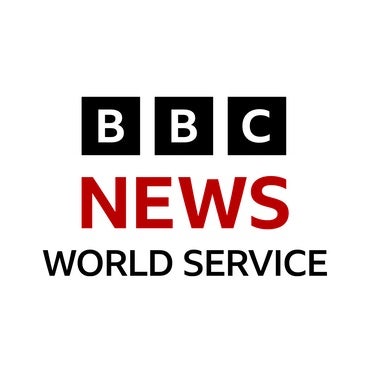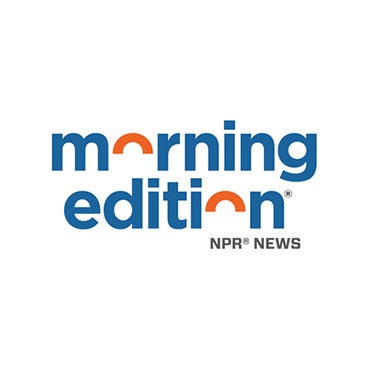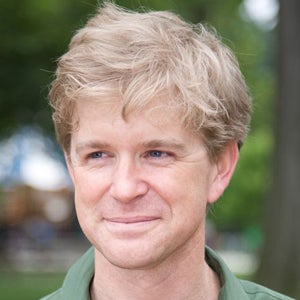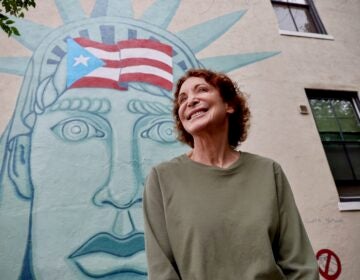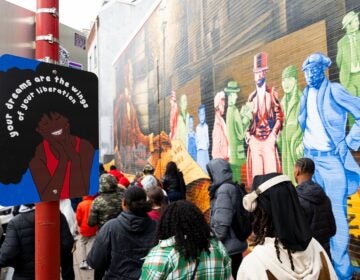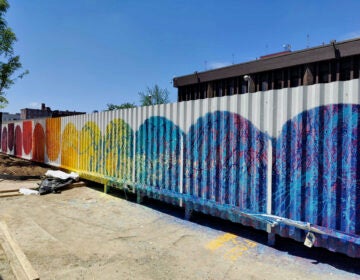A new mural by Shepard Fairey about the ideals of American liberty appears in Philly
Just in time for the nation’s 250th birthday celebration next year, Fairey’s work replaces a 112-foot mural of a classically Greco-Roman sculpture.
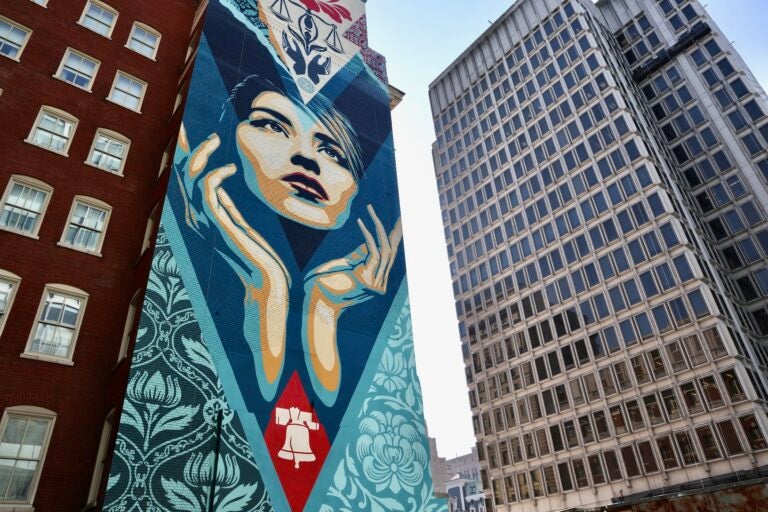
''Uplift Justice'' by Shepard Fairey is painted on the side of a Center City office building on Arch Street, opposite the Municipal Services Building. (Emma Lee/WHYY)
From Philly and the Pa. suburbs to South Jersey and Delaware, what would you like WHYY News to cover? Let us know!
For 25 years the “Declaration of Independence,” a 112-foot mural of a classically Greco-Roman sculpture, looked over one of Philadelphia’s busiest intersections at 15th and Arch streets from the towering wall of what is now a Courtyard by Marriott hotel.
Artist Peter Pagast had used one of the statues at City Hall across the street to evoke the ancient Roman influence of the American republic.
But no more. After a quarter century of exposure to the elements, “Declaration” had to come down.
“It was badly deteriorated,” said Mural Arts Philadelphia project director Brian Campbell. “The building ownership had approached us about doing something. They wanted it restored or replaced.”
Campbell said the cost of restoring would be the same as creating a new mural, so Mural Arts opted for the latter, asking celebrated street artist and designer Shepard Fairey, who came to widespread prominence when he designed the “Hope” poster during the first Barack Obama presidential campaign, to come up with something new.
Fairey’s “Uplift Justice” is strikingly different from its predecessor, whose monochrome palate has been replaced by vibrant pops of teal, aquamarine, scarlet red and yellow. A woman’s face looks upward toward a scale of justice.
So different, but not really. The works from Fairey and Pagast both deliver bedrock ideas about American democracy.
“The last lines in the Pledge of Allegiance are, ‘With liberty and justice for all,’” Fairey said, stressing the final two words. “This to me is about representing that concept of justice, and that relationship between a symbol and our actions in the wake of considering the symbol.”
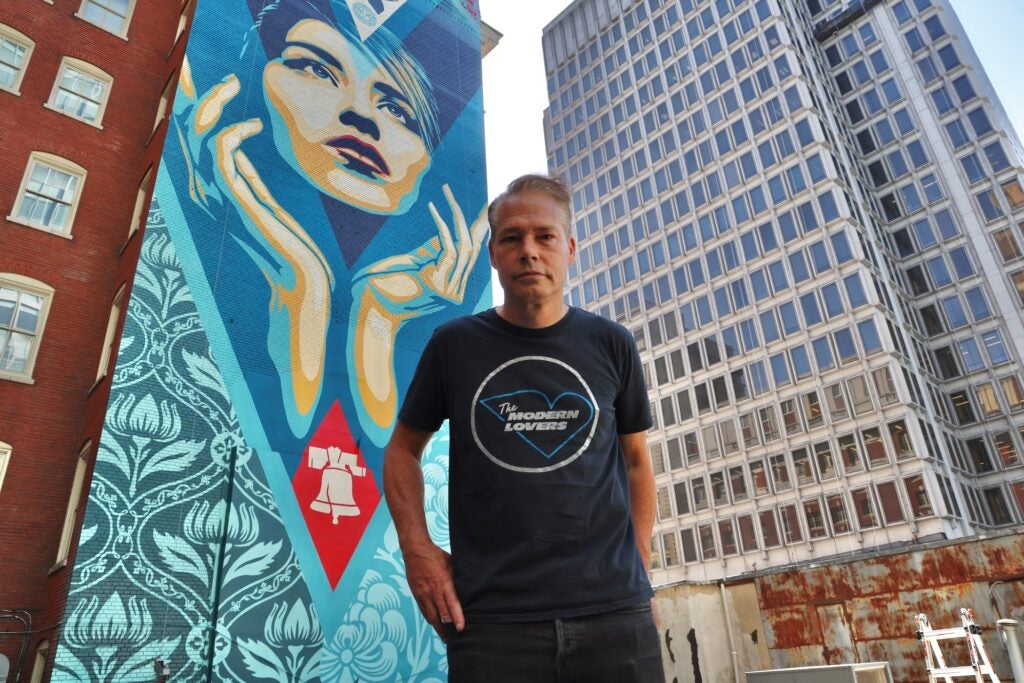
Fairey has created other large-scale public artworks in Philadelphia before, but typically made in wheat paste, which is not designed to last long. Pieces he had installed in Center City and Fishtown over the last 11 years have since disappeared.
“Uplift Justice” was painted directly onto the bricks of its host building, with the intention that it will last for several years, perhaps a couple decades. Fairey said he designed the mural for the long haul, with eyes on America’s 250th anniversary next year.
“We’re living in a time of a lot of political division, and I wanted to focus on some of those original, in my opinion, unassailable principles that guide us,” he said. “That pursuit of liberty and justice is very important. How we each interpret that might be different, but hopefully we can all agree on it.”
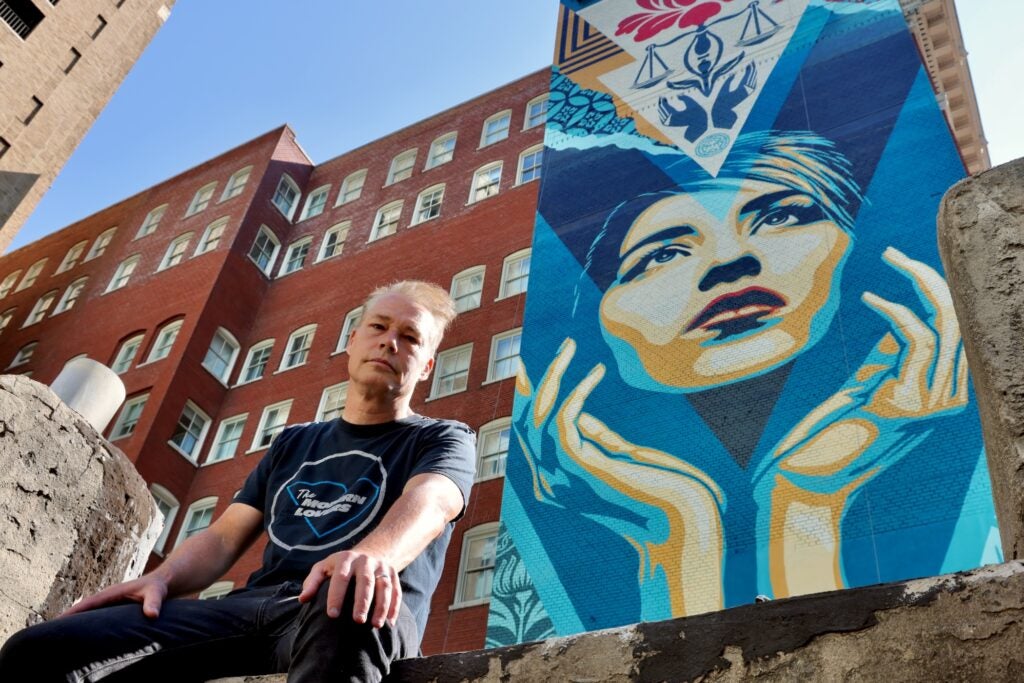
Fairey intentionally used red, white and blue in his color palette, but intentionally used hues of those colors different from the American flag. He said wanted to evoke patriotism while throwing off expectations.
The central design of “Uplift Justice” is set on a background of decorative floral patterns typical of the 19th century. Fairey said he found the patterns on historic Philadelphia textiles.
“I use patterns in a lot of my work because, one, I believe that they’re a really appealing decorative element,” he said. “Two, every single culture globally has created patterns as something pleasing in wallpaper and fabric.”
“For all the arguments about, ‘Oh, I don’t understand how people think from this place or that place,’ there are some pretty universal things that we all enjoy,” Fairey said. “Patterning and flowers.”
WHYY is your source for fact-based, in-depth journalism and information. As a nonprofit organization, we rely on financial support from readers like you. Please give today.
